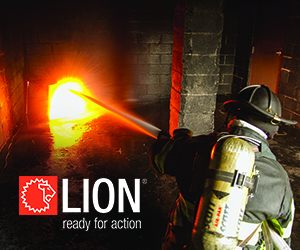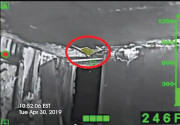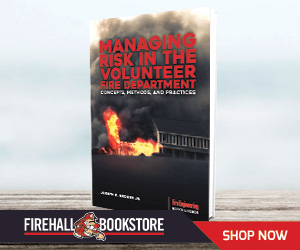| |
| |
 |
 |
| |
 |
|
@{mv_date_MMM d, yyyy}@ |
|
| |
The Canadian government plans to invest $10.1 million in a wildfire fuel treatment program in Whistler, B.C.
» Read more...
Alberta’s government is reinstating its Fire Services Training Program grants to help fire departments across the province better protect their communities. A total of $500,000 a year is provided to help fire department personnel gain knowledge and skills in a variety of topics and techniques.
» Read more...
B.C. is amending the Firefighters’ Occupational Disease Regulation under the Workers Compensation Act (WCA) by adding two cancers – pancreatic and thyroid – to the existing list of cancers and heart diseases that firefighters are at increased risk of developing.
» Read more...
In Quebec, François Néashit, chief of the Conseil des Atikamekw de Wemotaci, and Patty Hajdu, Minister of Indigenous Services, are taking the first step toward bringing fire protection services in Wemotaci up to provincial health and safety standards.
» Read more...
|
| |
 |
 |
| |
|
| |

LION’s Fire Safety Training Tools-technology that allows firefighters to train in countless locations and stage different situations to diversify your training and prepare you for any real fire situation.
LION’s ATTACK ™ system name, provides FLAMES AND SMOKE where live fire isn’t possible. The ATTACK™ Digital Fire Training System allows firefighters to train, diversify and experience realistic training anywhere. LION’s Hot Line Training System is a heavy-duty fire training tool designed to handle the requirements of advanced fire suppression training. Easily add any of the modular fire training props to expand your training arsenal for a fraction of the cost.
» Learn more |
| |
|
| |
 In Vancouver, at least five people have died this year in fires that started in the lithium-ion batteries that power e-bikes. Energy storage systems are essentially a bunch of lithium-ion batteries packaged together, and they’re everywhere: there are small versions in our mobile phones, and bigger, powerful units – many owned by provincial utilities – in municipalities across Canada. By Laura King
» Read more...
In Vancouver, at least five people have died this year in fires that started in the lithium-ion batteries that power e-bikes. Energy storage systems are essentially a bunch of lithium-ion batteries packaged together, and they’re everywhere: there are small versions in our mobile phones, and bigger, powerful units – many owned by provincial utilities – in municipalities across Canada. By Laura King
» Read more... |
| |
 Once the main body of the fire has been extinguished, conducting overhaul is the next task, which is primarily searching for and extinguishing hidden fires or remaining hotspots. Learn what your thermal imager can do, and its limitations, in ensuring the fire is out. By Manfred Kihn
» Read more...
Once the main body of the fire has been extinguished, conducting overhaul is the next task, which is primarily searching for and extinguishing hidden fires or remaining hotspots. Learn what your thermal imager can do, and its limitations, in ensuring the fire is out. By Manfred Kihn
» Read more... |
| |
|
| |

Risk management is one of the most important but frequently ignored fireground management skills. The volunteer fire service is particularly vulnerable because of a lack of understanding and training in a risk management system, why we need it, how it works, and how to use it. Firefighting is a dangerous job, but risks need to be measured against the capabilities of the responding firefighters. This new title by Joe Nedder brings clarity and insight gained from real-world experience.
» Order your copy now |
| |
|
| |
Within the fire service, aerial trucks are usually the biggest truck in the fleet and are admired and loved by most firefighters. Not every fire department will have a need for an aerial truck in their fleet, but they certainly can benefit from the use of one and can use mutual aid for assistance. By Mark van der Feyst
» Learn more
|
|
NFPA 1001 firefighter certification is unquestionably the North American standard for structural firefighters and fire departments. So, why would a fire department choose a lesser standard or no standard at all? By David Moseley
» Learn more
| | |
| FIRE FIGHTING IN CANADA: THE PODCAST |
|
|
| |
|
What is coaching and how can it help you as a leader? What is the difference between a coach and a mentor? Shelley Langille, founder and president of SeeShell Consulting, talks to Fire Chief Tom DeSorcy about how career and executive coaching can help you align your mind with your goals, become a better listener, and increase your personal performance and self-awareness on the path to ultimately becoming a better leader and coach to others.
» Listen now |
| |
|
| |
|
|
| |
| |








